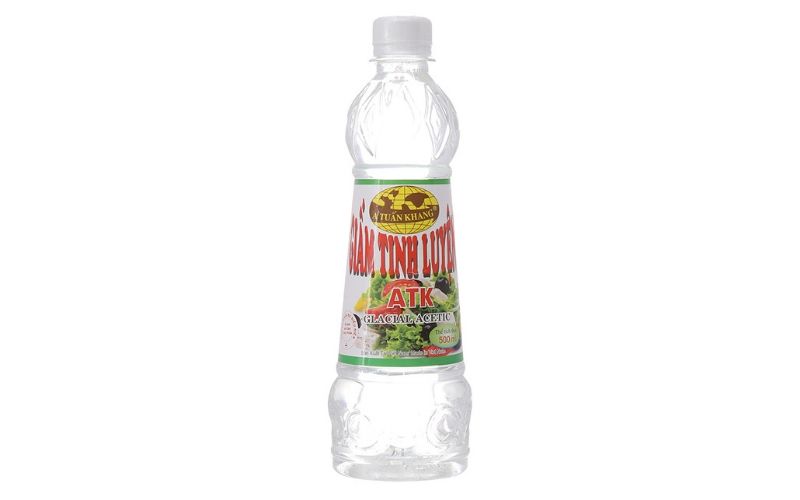Vinegar is considered an indispensable spice in many households’ kitchens. Besides its deodorizing and cleaning abilities, this condiment also contains essential nutrients, vitamins A and E, and beneficial amino acids.
Understanding consumers’ needs, the market now offers a variety of vinegars with distinct ingredients and purposes. The three most common types of vinegar used by many are rice vinegar, fruit vinegar, and refined vinegar. Let’s explore the differences between these varieties.
Learn more about the other uses of vinegar here:

1 Production Ingredients
Rice Vinegar
Rice vinegar is made from rice wine or glutinous rice wine. It can be produced from various types of rice, including black glutinous rice, brown rice, and white rice.

Fruit Vinegar
Fruit vinegar is primarily made from fruits, fresh coconut water, and sugar, which undergo fermentation. Common fruits used for this type of vinegar include bananas, apples, pears, grapes, pineapples, and dragon fruits.
For further reference:

Refined Vinegar
Also known as white vinegar, this variety has been around for a long time and is commonly used in cooking. Refined vinegar is made from beer dregs or molasses, and its sourness comes from the fermentation of ethyl alcohol.

2 Flavor and Aroma
Since rice vinegar is fermented from rice, it has a mild sourness and is less pungent compared to other vinegars. It also has the highest acetic acid content among the three types.
On the other hand, fruit vinegar has a gentle aroma and moderate sourness, resembling the tanginess of fruits.
Lastly, refined vinegar, as mentioned earlier, is formed from the fermentation of ethyl alcohol, resulting in the highest sourness level among the three and a slightly pungent flavor.
 Rice vinegar has a mild sourness
Rice vinegar has a mild sourness
Check out this reference for more information: Explore these 6 simple recipes for delicious pickled dishes that you can make and enjoy all year round!
3 Uses
Due to its mild sourness, rice vinegar is commonly used in salads and as a seasoning in soups, stews, noodles, and fried chicken dishes.
For a delicious fried chicken recipe using rice vinegar, visit:
As for fruit vinegar, you can add it directly to your dishes for a subtle tangy touch, or combine it with other ingredients to make a delicious dipping sauce or sweet and sour sauce to enhance your meals.
 Cooking with vinegar
Cooking with vinegar
Because of its intense sourness, refined vinegar is often used to pickle vegetables like turnips, shallots, and aubergines. It’s also great for removing the fishy smell from meat and fish before cooking. The abundant acetic acid content in the fermented wine can effectively eliminate unpleasant odors from food. Additionally, refined vinegar is useful for household cleaning.
For tips on how to clean your house using vinegar, visit:
4 Varieties
Rice vinegar comes in various colors due to the different types of rice used in its production. Rice vinegar made from white rice is light yellow, while brown rice vinegar is red, also known as Chinese vinegar. Black rice vinegar, on the other hand, is made from black glutinous rice.
As mentioned earlier, fruit vinegar is typically made from fermented fruits, resulting in varieties such as apple, banana, and pineapple vinegar.
 Types of vinegar
Types of vinegar
Not only does vinegar enhance the flavor of dishes, but it also offers numerous health benefits. We hope this article has helped you understand the different types of vinegar and how to use them appropriately.






































